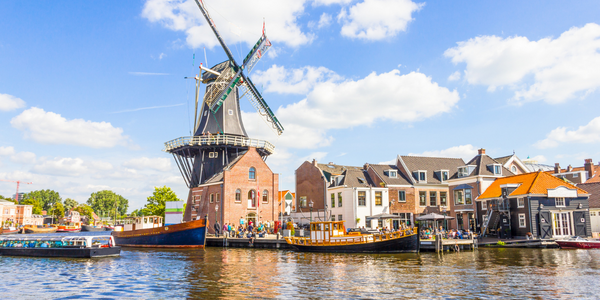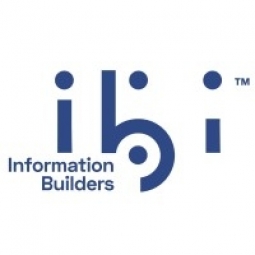Customer Company Size
Large Corporate
Region
- America
Country
- Mexico
Product
- WebFOCUS Reporting Server
- Active Technologies Reports
- Adapters for Oracle, SQL Server, and Esri
Tech Stack
- WebFOCUS
- Oracle
- SQL Server
- Esri
Implementation Scale
- Enterprise-wide Deployment
Impact Metrics
- Productivity Improvements
- Digital Expertise
Technology Category
- Analytics & Modeling - Data-as-a-Service
Applicable Industries
- Cities & Municipalities
Applicable Functions
- Business Operation
Use Cases
- Predictive Maintenance
- Process Control & Optimization
Services
- Data Science Services
- System Integration
About The Customer
The Secretariat of Environment and Natural Resources (SEMARNAT) is a public office in Mexico responsible for managing the country's environmental and natural resource policy. The agency's goal is to foster sustainable development and keep Mexico's citizens informed in matters concerning the environment and natural resources. SEMARNAT is tasked with protecting, restoring, and conserving the country's ecosystems, natural resources, assets, and environmental services. The agency was using print publications to disseminate figures, images, and maps with relevant environmental information, a process that was cumbersome and inefficient.
The Challenge
The Secretariat of Environment and Natural Resources (SEMARNAT) in Mexico was tasked with managing the country's environmental and natural resource policy. However, the agency faced challenges in integrating, processing, analyzing, and distributing environmental information from its network of offices to meet the demands of internal and external users. Most of SEMARNAT's environmental analytics efforts were performed manually, using print publications to disseminate figures, images, and maps with relevant environmental information. This process was cumbersome and inefficient, leading SEMARNAT to realize the need for a solid business intelligence (BI) and analytics platform.
The Solution
SEMARNAT implemented a centralized environmental information platform using WebFOCUS from Information Builders. This platform enabled SEMARNAT to integrate and consolidate data, as well as substantially improve its accuracy and usage via secure, automatic updates. The agency developed a project dubbed the National System of Environmental and Natural Resources Information (SNIARN), which focused on the integration, management, and dissemination of statistical data on the country's natural resources and environmental status. The system's ability to easily locate and visualize information supports the formulation of strategies and programs aimed at conserving biodiversity, protecting the environment and natural resources, and promoting sustainable development.
Operational Impact

Case Study missing?
Start adding your own!
Register with your work email and create a new case study profile for your business.
Related Case Studies.

Case Study
Turning A Stadium Into A Smart Building
Honeywell created what it called the “intelligent system” for the National Stadium in Beijing, China, turning the venue for the opening and closing events at the 2008 Summer Olympics into a “smart building.” Designed by highly controversial artist Ai Weiwei, the “Bird’s Nest” remains one of the most impressive feats of stadium architecture in the world. The 250,000 square meter structure housed more than 100,000 athletes and spectators at a time. To accommodate such capacity, China turned to Honeywell’s EBI Integrated Building Management System to create an integrated “intelligent system” for improved building security, safety and energy efficiency.
.png)
Case Study
Smart Street Light Network (Copenhagen)
Key stakeholders are taking a comprehensive approach to rethinking smart city innovation. City leaders have collaborated through partnerships involving government, research institutions and solution providers. The Copenhagen Solutions Lab is one of the leading organizations at the forefront of this movement. By bringing together manufacturers with municipal buyers, the Copenhagen Solutions Lab has catalyzed the development and deployment of next-generation smart city innovations. Copenhagen is leveraging this unique approach to accelerate the implementation of smart city solutions. One of the primary focus areas is LED street lighting.

Case Study
Buoy Status Monitoring with LoRa
The Netherlands are well-known for their inland waterways, canals, sluices and of course port activities. The Dutch Ministry of Infrastructure indicates that there are thousands of buoys and fixed items in and near water environments that would profit from IoT monitoring. One of the problems with buoys for example, is that they get hit by ships and the anchor cable breaks. Without connectivity, it takes quite some time to find out that something has happened with that buoy. Not to mention the costs of renting a boat to go to the buoy to fix it. Another important issue, is that there is no real-time monitoring of the buoys at this moment. Only by physically visiting the object on the water, one gains insight in its status.

Case Study
Barcelona Case Study
Barcelona’s heavy traffic and its associated high levels of pollution were the primary factors that motivated some companies and universities to work on strategies for improving traffic in the city centre. Bitcarrier is one of the technologies involved in the In4Mo Project, whose main objective is to develop the applications that form the core of smart mobility, one of the fundamental pillars of the smart city concept.

Case Study
China Mobile Smart Parking
Smart Parking, powered by NB-IoT technology, is making it easier for drivers to find free parking spots. Cities can better manage their parking assets and maximize the revenue available to them as a result. Drivers searching for parking create congestion and pollution by circling and hunting for available parking. Smart Parking services are able to significantly ease these problems by guiding a driver directly to a parking space.








